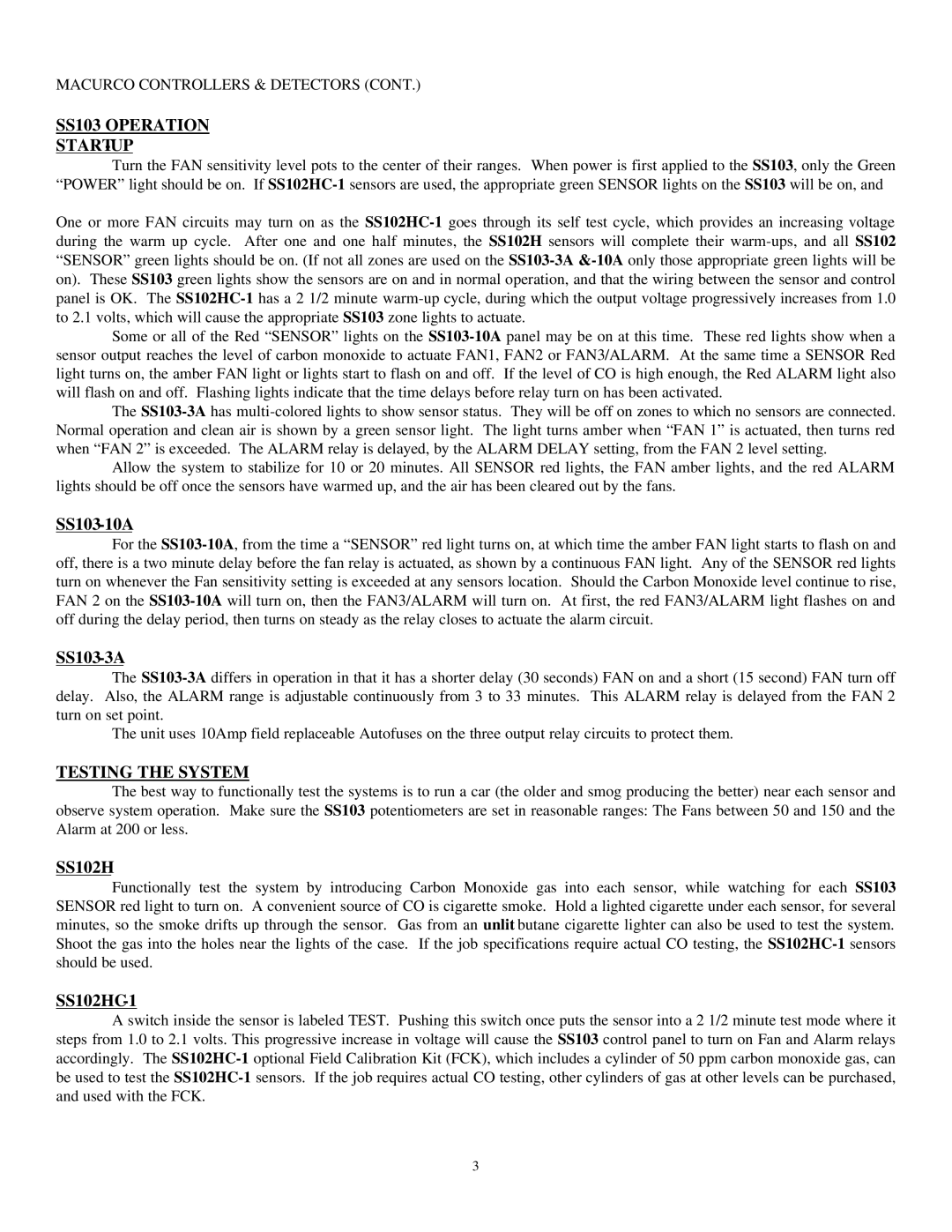SS102HC-1, SS103-10A, SS103-3A, SS102H specifications
Macurco provides advanced gas detection solutions with the SS102H, SS103-10A, SS102HC-1, and SS103-3A models, designed to ensure safety in various environments. These models are known for their reliability, accuracy, and ease of integration into existing systems.The Macurco SS102H is a standalone carbon monoxide detector, renowned for its high sensitivity and quick response time. It features a self-diagnostic function that continuously tests the sensor and output circuits to ensure they are operating correctly. The unit is equipped with a 4-20 mA output for easy connectivity with building management systems. It also comes with a durable housing that makes it suitable for both residential and commercial applications.
The SS103-10A model is a versatile gas detector capable of sensing both carbon dioxide and carbon monoxide. This dual-functionality is crucial in environments like restaurants and industrial kitchens where multiple gas detection is vital. This model features a robust sensor technology that ensures precise measurements and a long operational life. It also includes an adjustable relay output, allowing users to set alarm conditions according to specific needs.
For environments requiring continuous monitoring and alert systems, the Macurco SS102HC-1 is designed to detect harmful gases like carbon monoxide, methane, and propane. Its advanced analytical technology can distinguish between these gases effectively, making it ideal for residential, commercial, and industrial applications. The SS102HC-1 is also designed for easy calibration and features a visual and audible alarm, ensuring quick response in emergencies.
Lastly, the SS103-3A model offers enhanced detection capabilities for various combustible gases. With its wide array of sensor technologies, this model excels in providing accurate readings, even in challenging conditions where other detectors might fail. It is ideal for both indoor and outdoor applications. Additionally, the SS103-3A supports multiple output options including relay, analog voltage, and serial communication, making it easy to integrate into existing alarm systems.
In summary, the Macurco SS series provides reliable, accurate, and robust gas detection solutions tailored to meet the demands of various environments. Their innovative technologies ensure durability, longevity, and safety, making them indispensable in maintaining air quality and preventing hazardous situations.
